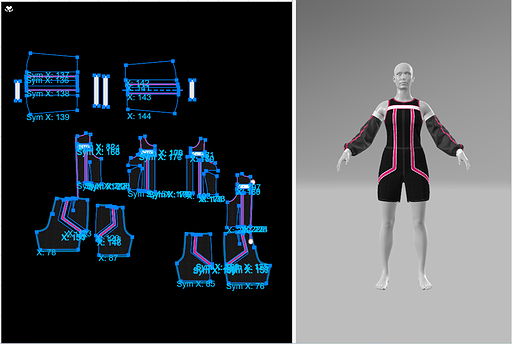Combining fashion and video games merges passions of new WSU graduate
| August 13, 2024 1:00 AM
PULLMAN — Clothing is a mandatory part of life, whether for real people or video game characters. And if digital players must be covered, why not make them fashionable?
That was the general idea behind Colby Van Dyk’s master’s thesis project at Washington State University.
“My inspiration came from thinking about what I like besides fashion,” said the Enumclaw, Wash., native, who defended her thesis in July. “I love playing video games and thought, ‘Why not combine these interests?’”
Van Dyk took the expertise gained while earning bachelor’s and master’s degrees from WSU’s Department of Apparel, Merchandising, Design, and Textiles and created virtual designs only to be worn by pixels.
“I wanted to explore the process of creating digital fashion for video games using design programs common in the fashion industry,” Van Dyk said.
She used 3D fashion design software called VStitcher and CLO, which she learned during her AMDT classes, then moved them into Unreal Engine, a video game design program. She also surveyed 50 individuals who were at least 18 years old and self-identified as playing video games at least weekly to get a feel for what people want in character fashions.
Those responses led her to design a line of three cyberpunk outfits. Cyber-punk, a genre of science fiction generally set in a futuristic time with advanced technology, is not something Van Dyk was familiar with.
“It was a fun challenge, and I’m really happy with how the collection turned out,” she said. “My senior design collection, which was part of the 2022 WSU AMDT Fashion Show, was princess-themed. It was cute and sweet, and this is dark and a big contrast to that. I enjoyed making something that I normally wouldn’t design.”
Van Dyk did notice several major differences between designing clothing that will physically be made versus designs that will only be digitally rendered on characters.
“In Unreal Engine, clothing isn’t supposed to have zippers or buttons,” she said. “You need to think about that a lot in real life, and it doesn’t matter in games. Same with pockets. I had to think about things like that completely differently.”
Van Dyk also didn’t make the designs with specific people in mind but designed characters to match the aesthetics of the clothing she created.
“I got to design the characters to look like they were a good match for the clothing I’d already produced,” she said. “I just said, ‘I want you to look like this,’ then made it happen.”
Van Dyk’s designs aren’t available in any games for now; they’re mostly a proof of concept.
She said that in researching the topic, she found that most clothing worn by characters is traditionally designed by video game developers. That’s changing as games become popular among wider groups of people, but she thinks there’s still an opportunity to expand.
“I think there’s room for more fashion design companies to get more involved in how characters appear in games,” Van Dyk said. “I think I had more fun doing this than the collection I did for the fashion show, which surprised me. This felt very personal.”







